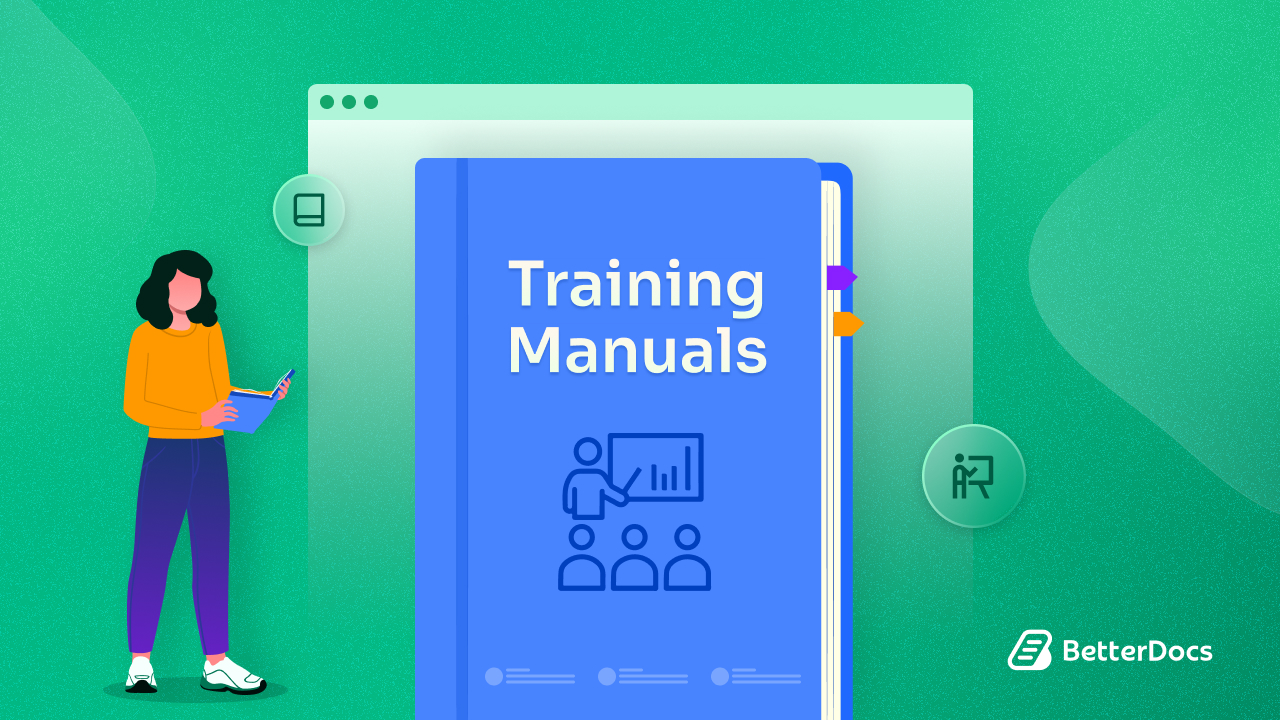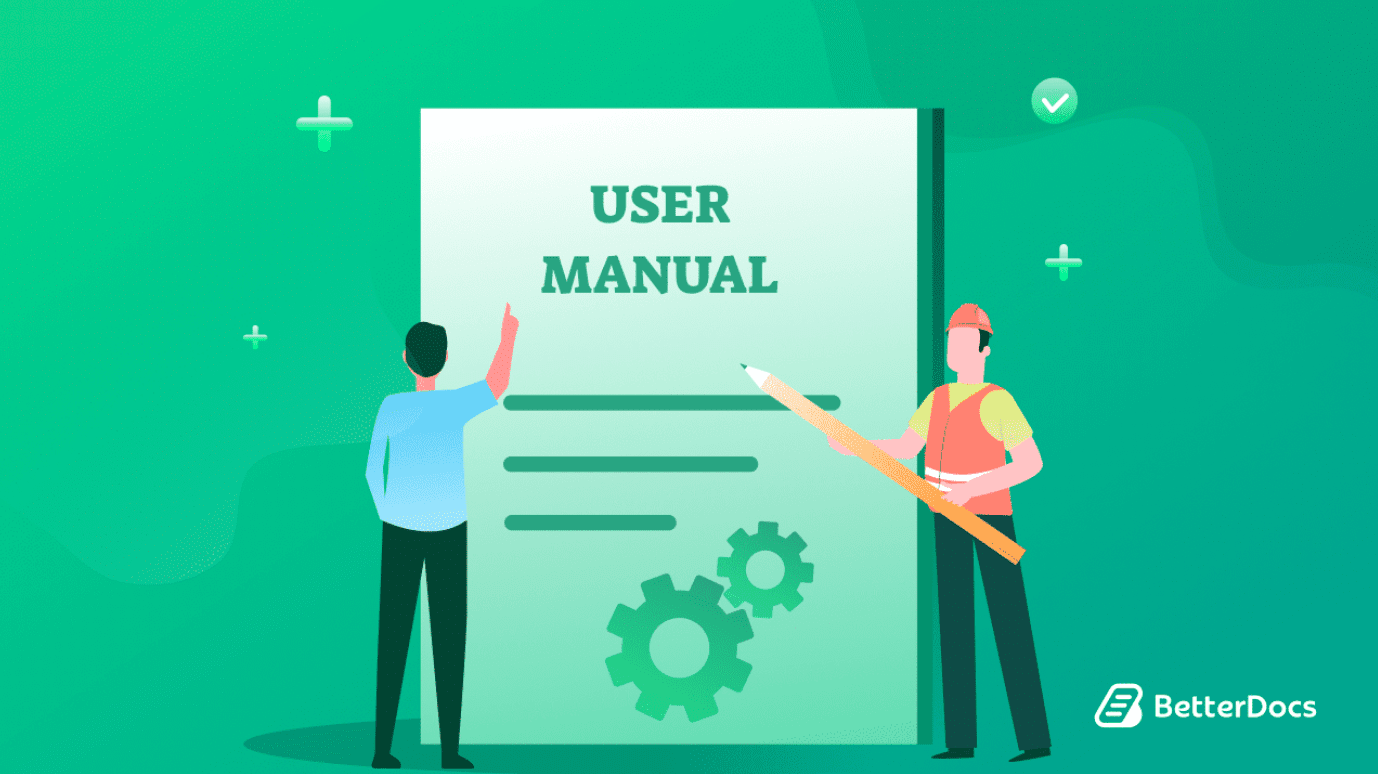When creating a training manual, organizations should ensure that it contains clear, concise language, a logical structure, and engaging visuals. For creating a well-structured, organizations should focus on clear, concise language, logical organization and engaging visuals.
By investing time and effort into developing a comprehensive manual, companies can foster a more knowledgeable, efficient and confident workforce, ultimately leading to improved productivity and reduced turnover rates. In this blog, you will learn what a training manual is, how to create manuals like a pro and a complete guide on the whole process to help you in detail.

What Is a Training Manual?
A training manual is an indispensable tool for any organization looking to streamline its onboarding process and ensure consistent employee development. These comprehensive guides serve as a roadmap for new hires and existing staff alike, providing detailed instructions, best practices and essential information about job roles and company procedures. By creating a well-structured training manual, businesses can significantly reduce the time and resources spent on individual training sessions while maintaining a high standard of knowledge transfer.
Training manuals come in various formats, from traditional printed documents to interactive digital platforms, allowing companies to choose the most effective medium for their workforce. They typically cover a wide range of topics, including company policies, safety protocols, operational procedures and role-specific tasks. The beauty of a well-crafted manual lies in its ability to standardize information across departments, ensuring that all employees receive the same high-quality guidance regardless of their role, trainer or location.
Why Is it Important to Have a Training Manual?
A well-crafted training manual is an indispensable tool for any organization serious about employee development and operational efficiency. By creating a comprehensive manual, you are not just providing information but also investing in your company’s future success. These manuals serve as a consistent, reliable resource that ensures all employees receive the same high-quality training, regardless of who conducts the sessions.
Moreover, training manuals significantly reduce the time and resources spent on repetitive instruction. They allow new hires to learn at their own pace and refer back to important information whenever needed. This self-guided approach not only accelerates the onboarding process but also empowers employees to take ownership of their learning.
Perhaps most importantly, a well-designed training manual helps maintain quality standards across your organization. It codifies best practices, outlines procedures and sets clear expectations for job performance. This consistency is crucial for delivering a uniform customer experience and maintaining your brand’s reputation.
Remember to consider the long-term benefits of creating a robust training manual. It’s an investment that pays dividends in improved productivity, reduced errors and a more knowledgeable, confident workforce.
Define the Types of Training Manuals
When it comes to creating practical training manuals, understanding the different types available is crucial. Each type serves a specific purpose and caters to unique learning needs. The most common types include:
1. Procedural Manuals
Procedural Manuals come with step-by-step guides that are perfect for teaching specific processes or tasks.
2. Employee Handbooks
Employee Handbooks offer comprehensive resources that cover company policies, procedures and expectations.
3. Technical Manuals
Technical Manuals offer detailed instructions for operating complex equipment or software.
4. Onboarding Manuals
Onboarding Manuals are designed to help new hires acclimate to their roles and the company culture.
5. Safety Manuals
Safety Manuals are essential for industries with potential hazards, outlining safety protocols and procedures.
6. Reference Guides
Reference Guides provide quick-access resources for employees to look up information as needed.
By choosing the right type of training manual for your team’s growth, you can ensure that your employees receive the most relevant and practical training possible. Remember, a well-crafted manual not only educates but also empowers your team to perform at their best. Invest the time in creating the right training manual and you will see improved productivity, reduced errors and a more confident workforce.
How a Training Manual Benefits Onboarding Employees

The training manual is a crucial tool in the onboarding process, helping new employees quickly adapt to their roles and understand company culture. It provides a structured approach to learning, ensuring consistency and reducing the time it takes for new hires to become productive team members. Below are some key benefits:
Clear Expectations And Guidelines
- A training manual helps to provide detailed explanations of job roles, responsibilities and expectations.
- It also outlines company policies, procedures and standards, reducing ambiguity.
Consistency in Training
- Training manual ensures that all new employees receive the same information, leading to uniformity in knowledge and skills.
- It also reduces the risk of miscommunication or varying interpretations of company protocols.
Efficient Learning Process
- Training manual allows new hires to learn at their own pace, with the ability to revisit information as needed.
- It also includes step-by-step instructions, helping employees quickly grasp complex tasks.
Increased Confidence And Independence
- Training manuals empower employees by providing them with the resources they need to solve problems independently.
- This can also lessen the need for constant supervision, allowing new hires to feel more confident in their roles.
Faster Integration into the Team
- Training manual helps employees understand the company’s culture, values and mission, fostering a sense of belonging.
- It also accelerates the process of becoming a fully integrated and productive team member.
Reduction in Onboarding Time And Costs
- Online training manual streamlines the onboarding process, reducing the time and resources needed to train new employees.
- You can also minimize the likelihood of errors and the need for retraining, saving costs in the long run.
A comprehensive training module is an investment that pays off by enhancing the onboarding experience. It leads to more engaged and competent employees who can contribute to the company’s success from day one.
Guide: 5 Ultimate Steps to Create a Training Manual Like a Pro

Creating a detailed training manual can be a manageable task. Follow these five ultimate steps to craft a professional-grade manual that will elevate your training process:
1. Define Your Objectives
Start by clearly outlining what you want your trainees to learn. It will guide you with your content creation and ensure your manual stays focused and relevant.
2. Organize Your Content
Structure your manual logically, breaking it down into easily digestible sections. Use a consistent format throughout to enhance readability and comprehension.
3. Incorporate Visual Elements
Enhance your manual with diagrams, charts and images. Proper visual representation of your working steps can significantly improve understanding and retention of complex information.
4. Write Clear, Concise Instructions
Use simple language and step-by-step guidance. Avoid jargon and provide explanations for technical terms when necessary.
5. Test And Revise
Before finalizing your manual, have it reviewed by colleagues and potential trainees. Their feedback will help you identify areas for improvement and ensure your manual meets its intended purpose.
By following these steps, you will be able to create a training manual that informs and engages your audience, setting the stage for successful learning outcomes.
Essential Elements Every Training Manual Should Include
When creating a training manual, certain essential elements must be included to ensure its effectiveness.
👉 A well-structured table of contents is essential, allowing readers to locate specific information quickly.
👉 Clear learning objectives should be outlined at the beginning of each section, setting expectations for what trainees will gain.
👉 Incorporate step-by-step instructions and procedures accompanied by visual aids such as diagrams or screenshots to enhance understanding.
👉 Include real-world examples and case studies to illustrate key concepts and their practical applications.
👉 Don’t forget to add interactive elements like quizzes or exercises to reinforce learning and engage trainees.
👉 Finally, include a section for frequently asked questions to address common concerns.
By incorporating these essential elements, your training manual will become a necessary resource for both trainers and trainees, ensuring a comprehensive and effective learning experience.
🎯 Real-Time Best Examples of Training Manuals

Companies like Apple, Google and Amazon have set the bar high with their comprehensive and user-friendly training materials.
⭐ Apple’s sleek, visually appealing manuals seamlessly guide employees through complex processes.
⭐While Google’s interactive online training modules encourage self-paced learning.
⭐ Amazon’s step-by-step guides, complete with video tutorials, showcase how to create training manuals that genuinely engage learners.
To create training manuals that stand out, focus on clear, concise language and incorporate multimedia elements. Use infographics, flowcharts and screenshots to break down complex information. The best training manuals anticipate learners’ questions and provide easily accessible answers.
By studying these exemplary training manuals and implementing their successful strategies, you can develop materials that not only inform but also inspire and motivate your team.
Now Create Training Manuals Like a Pro!
The importance of creating training manuals cannot be overstated. They provide a standardized reference point, minimizing errors and promoting best practices across your organization. Moreover, well-designed manuals can significantly cut down on training costs and time, allowing new team members to become productive more quickly.
🎁 Bonus: BetterDocs Internal Documentation for WordPress
With the right approach, you can create training manuals like a pro. Start by clearly defining your objectives and audience. Then, break down complex processes into easy-to-follow steps, incorporating visual aids where necessary. Remember to use clear, concise language and organize information logically. By following these principles, you will produce training manuals that empower your team and drive organizational success.


![5+ Knowledge Base Challenges You Should Look Out for in 2026 [With Solutions]](https://betterdocs.co/wp-content/uploads/2025/12/1280x720-_-Blog-Banner-_-Knowledge-Base-Challenges-1-1024x576.jpg)



